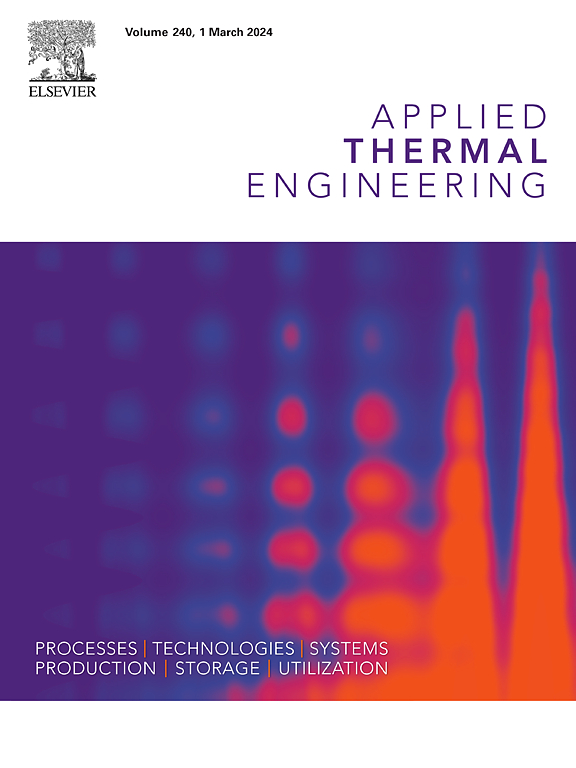Effect of non-equilibrium phase transition on the aero-thermodynamic performance of supercritical carbon dioxide compressors
IF 6.1
2区 工程技术
Q2 ENERGY & FUELS
引用次数: 0
Abstract
Phase transition is a prominent issue for the supercritical CO2 compressors operating near the critical region. The non-equilibrium behavior of phase transition makes it difficult to accurately predict performance under these conditions. A non-equilibrium phase transition model is proposed to analyze the aero-thermodynamic performance of supercritical CO2 centrifugal compressors with different inlet conditions. The model examines phase change characteristics and compressor performance under variable operating conditions. The results indicate that this model can effectively predict the aero-thermodynamic performance of compressor near critical conditions, with an average error of less than 2% in the performance curves. The inconsistency between low-temperature and low-pressure regions, along with the increase in liquid phase volume, are typical characteristics of non-equilibrium phase transition in supercritical CO2 compressors. The non-equilibrium effect of phase transition can reduce the leakage loss at high flow rates, but also increases the likelihood of stall at low flow rates. Furthermore, the concept of “non-equilibrium degree” (NED) is introduced to quantify these effects. When NED exceeds 0.2, the isentropic efficiency of the compressor decreases by 15.1% compared to its maximum efficiency. Designing inlet conditions for supercritical CO2 compressors with NED below 0.1 is more suitable because it has a larger inlet flowrate and higher efficiency.
非平衡相变对超临界二氧化碳压缩机空气热力学性能的影响
对于在临界区附近运行的超临界二氧化碳压缩机来说,相变是一个突出的问题。相变的非平衡态行为使得准确预测这些条件下的性能变得十分困难。本文提出了一种非平衡相变模型,用于分析不同入口条件下超临界二氧化碳离心压缩机的空气热力学性能。该模型研究了不同运行条件下的相变特征和压缩机性能。结果表明,该模型能有效预测压缩机在临界工况附近的空气热力学性能,性能曲线的平均误差小于 2%。低温和低压区域的不一致性以及液相体积的增加是超临界二氧化碳压缩机非平衡相变的典型特征。相变的非平衡效应可以减少高流量时的泄漏损失,但也会增加低流量时失速的可能性。此外,还引入了 "非平衡度"(NED)的概念来量化这些效应。当 NED 超过 0.2 时,压缩机的等熵效率将比最大效率降低 15.1%。设计 NED 低于 0.1 的超临界二氧化碳压缩机入口条件更为合适,因为它具有更大的入口流量和更高的效率。
本文章由计算机程序翻译,如有差异,请以英文原文为准。
求助全文
约1分钟内获得全文
求助全文
来源期刊

Applied Thermal Engineering
工程技术-工程:机械
CiteScore
11.30
自引率
15.60%
发文量
1474
审稿时长
57 days
期刊介绍:
Applied Thermal Engineering disseminates novel research related to the design, development and demonstration of components, devices, equipment, technologies and systems involving thermal processes for the production, storage, utilization and conservation of energy, with a focus on engineering application.
The journal publishes high-quality and high-impact Original Research Articles, Review Articles, Short Communications and Letters to the Editor on cutting-edge innovations in research, and recent advances or issues of interest to the thermal engineering community.
 求助内容:
求助内容: 应助结果提醒方式:
应助结果提醒方式:


